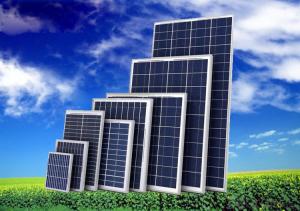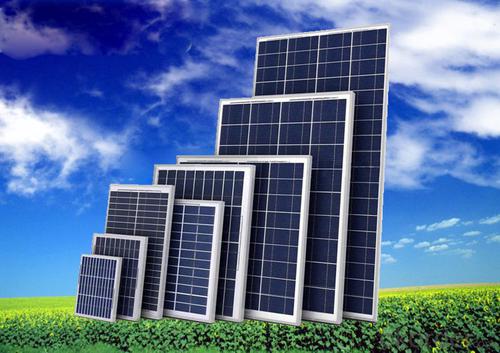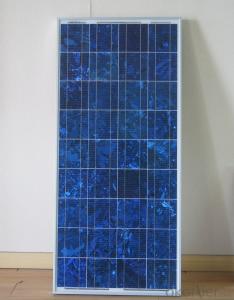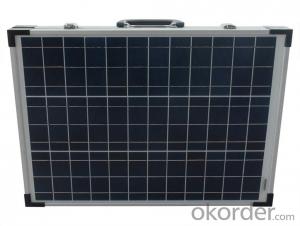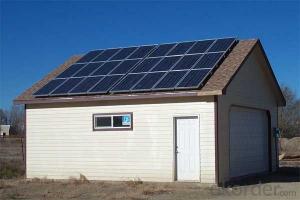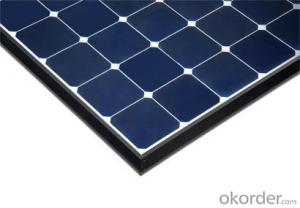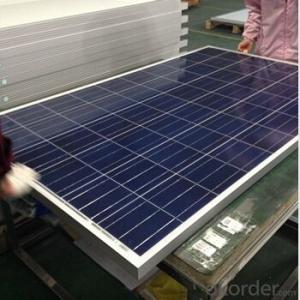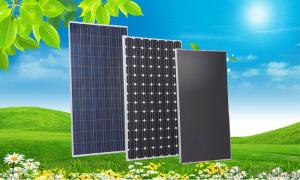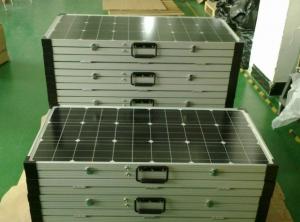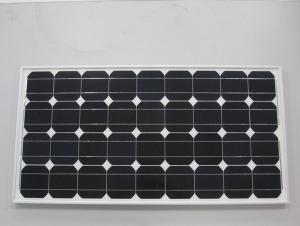Solar Panels for Nonprofit Organizations - High Efficiency Good Quality Poly 100W
- Loading Port:
- Shanghai
- Payment Terms:
- TT OR LC
- Min Order Qty:
- 1000 watt
- Supply Capability:
- 100000000 watt/month
OKorder Service Pledge
OKorder Financial Service
You Might Also Like
Specification
1. Description of Solar Panels
Solar Module is the core part of solar PV power systems, also is the highest value part of it. The function of Solar Module is to convert the sun's radiation to electrical energy, or transfer it to battery and store in it, or to drive the load running.The Product has been widely used in space and ground, it mainly used for power generation systems, charging systems, road lighting and traffic signs areas. It could offer a wide range of power and voltage, and with high conversion efficiency, and long service life.
2. Detailed Information
Materials | Silicon | ||
Size | Length | Width | Height |
1640 | 992 | 40 | |
Guarantee | 12 yrs free from defects in materials and workmanship No less than 90% within 10yrs and no less than 80% within 25yrs TUV(IEC61215&IEC61730), CE, UL | ||
Application | Photovoltaic/ solar/ green energy/ energy saving | ||
Descriptions | 1.High efficiency crystalline silicon solar cell. Even if under the weak light, the solar module can produce maximum power output. 2.Tempered glass (toughened glass): Anti-reflecting coating and high transmission rate glass increase the power output and mechanical strength of solar module. 3. EVA and TPT: Using high quality EVA and TPT to prevent destroying and water. 4. AI frame: Without screw, rner connection. 6 holes on the frame can be installed easily. 5. Junction box: Multi function junction box with water proof. 6. Long lifetime: ≥25 years; Less power decrease. 7. Good performance of preventing from atrocious weather such as wind and hails. 8. Resisting moisture and etching effectively, not effected by geology. 9. The certificate issued by international authority: UL, TUV, IEC, CE.
| ||
Packaging Details: | 26pcs/pallet, 28pallets/ 40HQ Our solar panels are packed in cartons, and then pallet. Shipping by sea or by air are both ok, it up to customer’s chose. We’d like to inquiry the freight cost for customer after be informed exact quantity and destination address. | ||
3.Technology
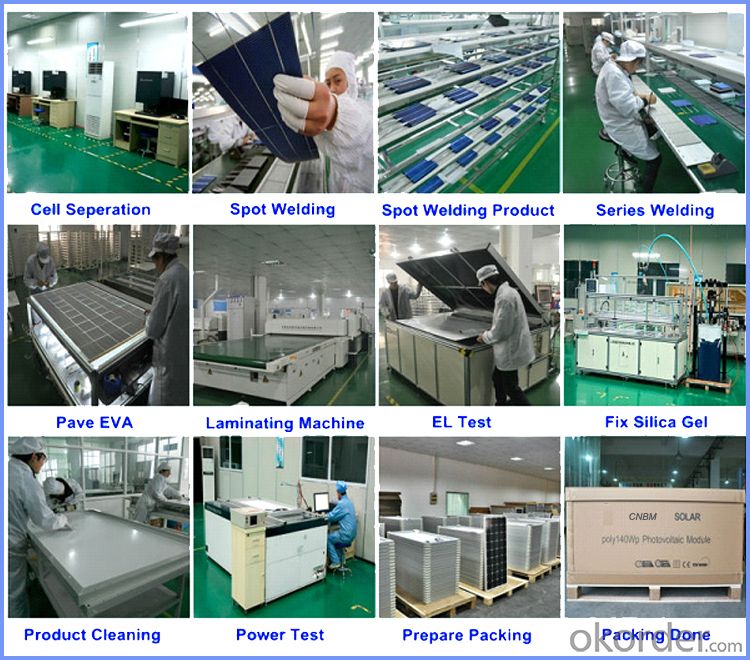
4. The Pics of Products
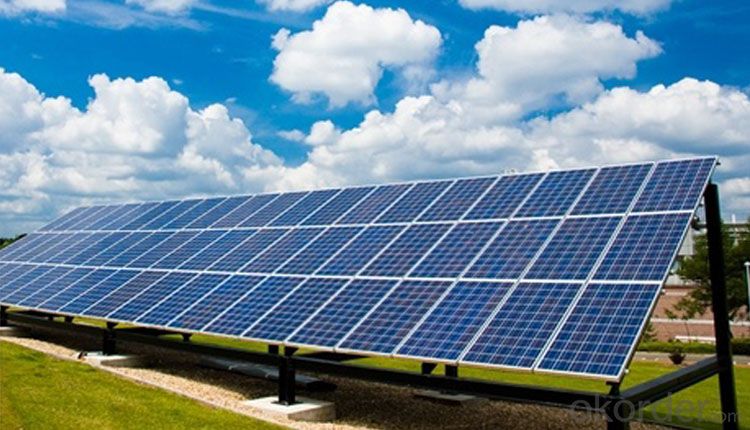
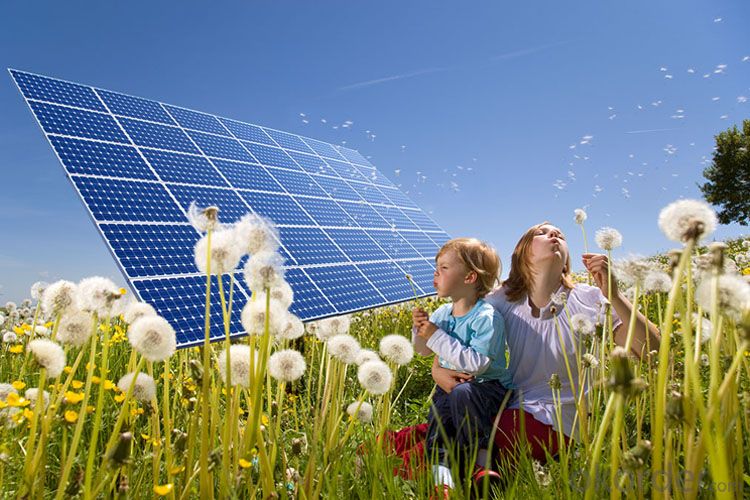
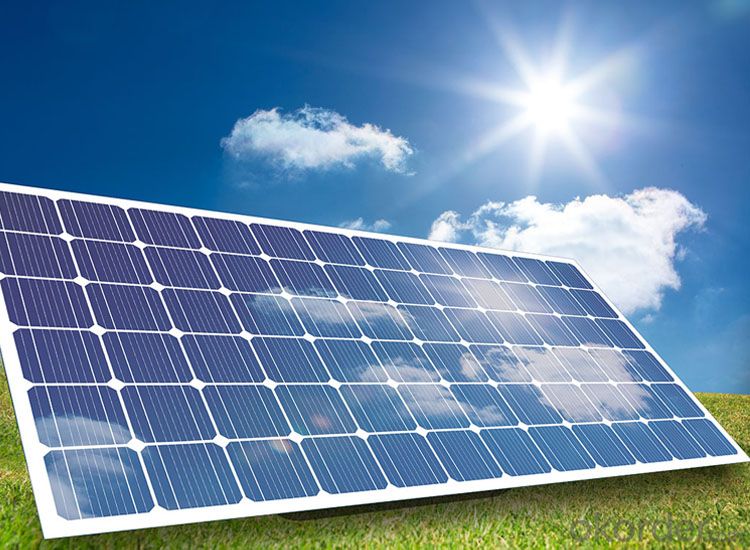

5. FAQ
A. Professional Manufacturers , Strict quality control & power classification Silicon Solar PV Module
B. 100% A grade solar cell with Positive tolerance power range.
C. High Conversion Efficiency , High transmission rate , low iron tempered Anti-reflecting/coating film 3.2mm glass
D. Anti-aging & high visosity EVA
E. high frame resistant & Double-sided fluorine TPT
F. Anodized aluminum alloy high thickness frame
G. 3 or 6 bypass diodes , 90mm 4m2 cable , MC4 connectors & waterproof junction box
H. Long life, Easy installation, high wind & hail impact resistance
I. Be resistant to atmospheric exposure & effects of delamination
J. ISO9001:2008/ISO14001:2004/OHSAS18001:2007/ CE /TUV/CEC/ IEC/EN61215 IEC/EN61730/CHUBB INSURANCE
K. 10Years Manufacturing Quality Warranty , 10Years 90% Power output Warranty, 25Years 80% Power output Warranty
- Q: Ok Im trying to power my room using solar panels and I've figure out that I need about 700 watts to do so, but I really only use my electronics at night. I was wondering if I could buy lets say a 200 watt solar panel and let it charge a battery all day would that work? I live in southern california so I dont have to worry to much about cloudy days. also any suggestions on where to buy a panel, inverter, charge regulator, and battery?
- What you really need to calculate is your energy requirements, you are only stating your power requirements. Power (W) = how many watts of power are you using? Time (h) = how long are you going to use the power for? Energy requirement(Wh) = W * h take the answer to that equation and plug it into the exact same equation except substitute how much sunlight you get for h and then solve for W to find what you need in the way of a solar panel. Wattage of solar panel (W) = Energy requirement (Wh)/hour of sunlight per day (h) Now you know what wattage of solar panel you need. For the battery you use a different equation: Energy in the Battery(Wh) = Battery Voltage (V) * Current Capacity (Ah) Solving for Current Capacity: Ah = Wh / V This will tell you how big a battery you need, but you also need to be concerned about how much current it can source. For this you need to know what your peak power requirement is. Wmax = peak power requirement Max discharge current (Amax) = Wmax / Vmax Also you will need an inverter rated to Wmax as well.
- Q: we are planing to move out of the grid. we need to operate constantly 2 laptops online - does any one can tell us how much solar panels we shall need to make sure of that?
- Are you going to have anything else on electric? Water heater, Stove, Refrigerator, Dishwasher, Washing machine, lights, fans, or a barn with lights and possible water heaters for winter? If so, you may need a lot more panels than that. We use 6.8 kW of panels in a place not known for sunny days, and do all right, but sometimes have to be careful if it is cloudy for many days in a row. You may be able to get by with about half of that if you live in a sunny, southern clime. Good luck - there are lots of non electric options for other (non-laptop) appliances, so you could cut back on other stuff as well.
- Q: Does anybody know if there are any courses for solar panel installation, and/or what trades you need for this position?
- What you ought to recognize will depend on WHAT sort of installations you're going to be operating with. In regular, for business you wish to have fundamental mechanics and wiring. For house, you may additionally want a few carpentry, roofing, preserving structural integrity, plumbing, and so on. In side it additionally will depend on what sort of sun installations you're doing, (vigour, air warmers, water warmers, and so on.)
- Q: I'm trying to charge rechargeable AA batteries with a solar panel. What guage wire should I use to connect the panel to the batteries? Should I use a diode to keep the batteries from overpowering the circuit? If so, what size? My panel is 4.8V 50mA.
- You not only need a diode, but a circuit that opens the circuit if the voltage falls below a certain level. The diode is not the problem, but the batteries powering the solar panel when the voltage falls to low.
- Q: My husband is interested in buying solar panels for the roof and i dont know where to find them.
- I co own Sunpower Solutions. We are a solar company in South Jersey. I can tell you that the average cost for a system under 7Kw, is $7.95 per watt. What people fail to realize, is that there is a lot more that goes into a PV system than just panels. Racking, hardware, combiner box, inverters, labor to put the panels up, pay the electrician that ties it all together, the architect that measures the wind load on the panels, etc. It's not cheap. Although, in the state of NJ, the the amount of time it takes for the system paying for itself, is 4 years. It doesn't matter if it's a huge system or the smallest PV system, it's 4 years. Any questions, just ask. @Martin: The thing with those programs, is that the company that is leasing the system, is taking advantage of the renewable energy credit that the system is producing. Yes you get cheap electricity, but you are not taking advantage of the money making ability of the renewable energy credits.
- Q: I have a college project due within a week, and it involves a 00 Watt solar panel and a 2V 7.5Ah Battery. I got the project finished up and producing free energy for my house in September, however recently the battery I bought, that was specifically made to hold Solar Power, lost its charge (unsure how or why) and it is pretty much useless. Can I just go to a store and buy any 2V car battery to use?
- Those answers are partly correct. You cannot recharge two 2 volt batteries in series with a photovoltaic panel with an open circuit voltage of 8 volts. You possibly over charged your 7.5 AH battery with a 00 watt photovoltaic panel, which can supply 8 amps to the battery with unusually bright sun light = fully charged in one hour. More likely you did not charge the battery for a month or more which killed it. Also discharging below 2.6 volts shortens the life of the battery, or short circuiting the terminals even briefly. Yes a deep cycle sealed lead acid battery rated 2 AH is likely the best unless you buy a 00 amp hour marine battery which weighs about 80 pounds and will take at least two days of bright Sun to fully charge.
- Q: I'm going to this camp and the instructors asked us to be prepared tomorrow to build a sun tracker for a solar panel. Does any one have any ideas, tips, or advice?
- tbls0 has a good idea for the tracker, but let's take this one step farther. A clock motor large enough to move a solar panel, unless it is a very small one is going to be large, and expensive. Use the timer motor, as suggested, but attach a slotted disk to it, with a light source on one side, and a detector on the other side. As each slot comes up and allows light to pass through, this creates a one shot pulse which is used to cause a stepper motor to move position to keep the panel aimed at the sun. At the end of the panel travel for the end of the day, a switch could be set to close, bypassing the step control to put the motor into full constant speed reverse, this causing the panel to swing back to the morning position. The whole affair gets it's start up call by means of a light detector, similar to those used to turn lights off at sun up. The control would, of course be set to turn the system on to track the sun during the day. While some digital control is going to be needed, the system would not need a computer to run it.
- Q: i really love the idea of solar and want to start out small, so i'm new to this.I plan on getting an 85w panel to charge my laptop. what other equipment is needed to accomplish this?would i need to get a battery or does the solar panel hook directly to the laptop. Does one end just lead to a conventional outlet similar to a wall outlet?could someone please give me a detailed explanation with options about this? i would greatly appreciate it.
- humm..... .need HUGE solar panel (alot) 2. wires 3. aligato clips . put the panels on the roof 2. use the aligator clip to clip the wire from the panel to the bars of the pluger of the comp. charger 3.tada mark me best:)
- Q: I own a townhome in the Phoenix area (my power company's SRP, if that makes a difference). Phoenix is a great place for solar. I could probably save money, in the long term, if I got some solar panels.But I am currently extremely broke, so I can't buy solar panels unless I will more or less immediately be paying no more than I am now per month, with little or nothing down. And most of the solar leasing places won't work with me, because (as is common for townhomes) I don't technically own my roof. I have permission to put things on it, but the property management people (or whoever actually owns my roof) won't sign the lease or whatever.Anyone know of either a way to buy solar panels without paying significantly more per month than I already do for electricity, or a solar leasing company that can work with the restrictions I have?
- There are companies who would install solar panels on your roof for no cost. The catch is that they get the power generated for the first 20 years which is the useful life of the panels then you get what's left of the obsolete panels, meanwhile you're required to purchase your power from them at allegedly reduced rates but there is no guarantee that they would remain reduced versus the market once they have you locked in. It's like how the cell phone companies will give you a free cell phone if you sign a contract. Keep in mind that once you've factored in the installation costs and the useful life of the panels, the effective costs of solar photovoltaic energy is about 23 cents to 43 cents a kwh while grid power is about 5 cents per kwh to the consumer, 3 cents per kwh to the utilities for coal generation. It's just that so few people understand how to project an initial capital expense with periodic future returns through discounted cash flow, hence people think solar power is free out of ignorance. Without government incentives, there are no economic benefits to solar and most solar installers structure the sales such that they gain the economic benefit instead of the consumer who is often ignorant of how to calculate the financials.
- Q: why don't we take a cue from mother nature and make our soar panels like trees? thousands of leaves or needle (like a pine tree) instead of one big flat panel? I mean it seems to work pretty good for all the plants i see why would it not work for us. It would be aesthetically pleasing and with the right engineering wouldn't it make them not have to worry about tracking the sun? i already have some ideas about the process of making them just no available labratory.
- Because we and the trees are trying to solve a different problem. We want electricity, a tree wants light (and some heat) for photosynthesis. In getting the electricity we use Silicon for solar panels. (Sometimes Gallium Arsenide). And we exploit the same thing in Silicon that allows them to be computer chips. The fact that they conduct differently when voltage is applied. But for a solar panel that is done essentially in reverse. We GET a voltage difference (electricity) from shoving energy through it. Look up junction bias on google or yahoo for explanation. But the DESIGN problem is: You have to couple these panels together the right way - according to their bias. You can't string them up willy nilly. There is a pattern. And when one breaks in this pattern. (I mean when the actual panel cracks, which they do easily as they are brittle). It can change the overall bias. This can make even be worse than if it was removed, it can actually fight against the working ones. The efficiency is there in arranging them like a tree, but the practicality of maintenance would be daunting.
Send your message to us
Solar Panels for Nonprofit Organizations - High Efficiency Good Quality Poly 100W
- Loading Port:
- Shanghai
- Payment Terms:
- TT OR LC
- Min Order Qty:
- 1000 watt
- Supply Capability:
- 100000000 watt/month
OKorder Service Pledge
OKorder Financial Service
Similar products
Hot products
Hot Searches
Related keywords
